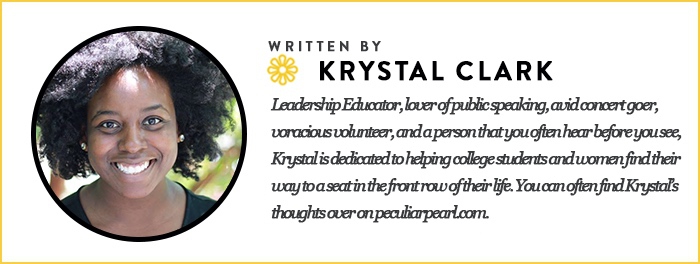 The first step in refining yourself is to know yourself. Every leader must be self-aware in order to effectively lead and in order to create honestly from yourself and for others.
The first step in refining yourself is to know yourself. Every leader must be self-aware in order to effectively lead and in order to create honestly from yourself and for others.
The story of my leadership and creativity is born from my social identities.
Social identity is a person’s sense of who they are based on group membership(s).
It is important for me to define my identities, have an understanding of how they frame my life perspective, and become aware of how my identities consciously or unconsciously show up in how I lead and in the products I create.
My challenge and responsibility as a leader and creative is to understand my building blocks. Social identifiers are the blocks that compose my foundation. Everything that I put into this world, stems from these identities and what I have interpreted them to mean for my life.
Social identifiers are the blocks that compose my foundation. Everything that I put into this world, stems from these identities and what I have interpreted them to mean for my life.
From my identities come the stories I tell myself about how life works including my abilities, my limits, my privileges, my work ethic, how I should communicate with others, who I should befriend, expectations I should have for myself and others, and how I feel others perceive me, etc. All of this “stuff” shows up in how I lead others and in the things I create for others to consume. It’s how I compose my version of the truth.
 As a leader and a creative, I know that people will want to know and will pay attention to my identities in order to understand whether they can relate to me, learn from me, trust me, emulate and aspire to live the life I present, and ultimately it could determine whether they allow me to have an influence on their life.
As a leader and a creative, I know that people will want to know and will pay attention to my identities in order to understand whether they can relate to me, learn from me, trust me, emulate and aspire to live the life I present, and ultimately it could determine whether they allow me to have an influence on their life.
The Big 8 are often the first identities we think about when taking a deep dive into how you identify yourself.
My Big 8 Identities are in bold:
- Race- Black
- Ethnicity- African-American
- Socioeconomic Status- Lower Middle Class
- Sexual Orientation- Heterosexual
- Ability- Fully Physically and Mentally Able
- Age- 32
- Religion- Christian
- Gender – Woman
Additional Social Identifiers Include:
Appearance and Body Image- Curvy, plus-sizeFamily Origin and Family Structure – single parent family, youngest child, single without childrenGeographic/Regional Background- Mid-Atlantic, SoutheasternLanguage – Native English speakerAcademic/Social Achievement – Master’sBeliefs- Liberal, Democrat
Some of my social identities are more salient than others. I think about my race, ethnicity, and gender but I rarely think about my ability or that English is my native language. Depending on the context of the current season of my life, my social identifiers move closer to or farther away from my core. I never thought deeply about my gender identity in college but when I moved into a fraternity house in graduate school with 34 men to serve as their Residential Fellow (i.e. House Mom), this identity, that of woman, became very apparent and important to me in that space.
 To add another layer to this parfait, I’m not just one identity at a time. The intersectionality of my identities is key. I’m not only a woman. I live my life as all of these identities simultaneously.
To add another layer to this parfait, I’m not just one identity at a time. The intersectionality of my identities is key. I’m not only a woman. I live my life as all of these identities simultaneously.
The first step in refining yourself is to know yourself. Every leader must be self-aware in order to effectively lead and in order to create honestly from yourself and for others.
Whether I’m always aware of it or not, I lead and create from my social identities. It is important for me to recognize this because I desire to practice inclusive leadership and to produce widely devoured products that a diverse population of people can look to in order to find a sense of belonging and mattering.
Here’s a little drop of truth: We don’t talk about identity very well in this world. It’s one of those things that we don’t talk about at the dinner table. Challenge yourself by opening a space for an honest, challenging, and necessary dialogue. With those you lead and with the audiences you create for, be open to taking a dive into the world of social identities. Be okay with the discomfort. Take a look at another person’s version of the truth.
Ahem, another drop of truth: Don’t discount or downplay other’s identities.
This often plays out the most in people happily and boldly claiming to be colorblind. My identities are important to me and I value them. I’m not ashamed of any part of me. I can’t fully be known or loved unless you recognize my identities and what they mean to me in this world. Don’t erase parts of me for your nobility. When I tell you who I am, believe me.
The best thing that I’ve learned to do as a leader and creative is to recognize my identities and voice my inability to understand or address every layer of every person. I think about how I honor other versions of the truth in what I create. I work hard to express empathy for the lived experiences of others and invite them to share their voices with me as I develop and expand upon my leadership and creative practices.
Photos by Karen Hernandez
